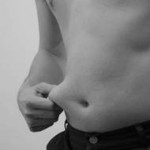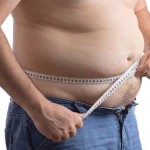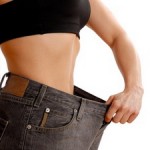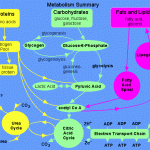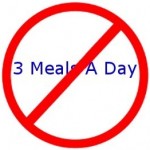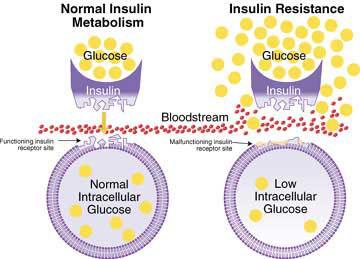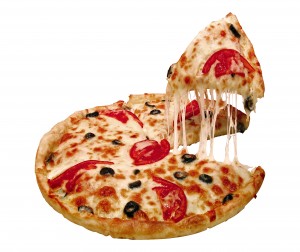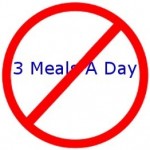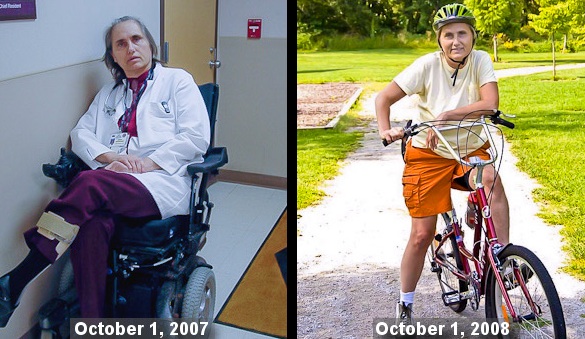Welcome Back – Sorry about the break between posts but as John Lennon used to say:’ Life is what happens to you while you’re making other plans…”
This week a longer post on a frightening new word…and term that has been created to reflect our current health as a society.
Our Western Societies have become, according to the American Centre for Disease Control (CDC), obesogenic ones.
The typical Western diet (and an increasing number of other culture’s diets as they are exposed to Westerns ‘culture’) is full of unhealthy, fat forming, health damaging foods. On the whole, despite the growth in Gyms, Pilates, Yoga, marathon running, triathlons etc etc there is actually far less physical activity across the population of any Western country then there was 20 years ago. Even in the East as cities become more common and larger the physical activity index of these countries is dropping as well.
Simply put the World’s population is in danger but not in the main from wars, from famine or disease – although there are still plenty of those to go around unfortunately…
No – our lives are at risk because we can’t put our damn forks down!!
Because we can’t seem to eat close to unprocessed, calorie sparse, nutrient dense foods as our main fuel intake. Because we don’t move enough, often enough or challengingly enough.
We are simply killing ourselves and our societies because we are eating too much and too much of health damaging foods.
Moving less, eating more poor food and eating too much are the reasons why our risk and even worse our children’s risk of obesity have increased.
In countries like Australia, the USA & Great Britain the number of overweight and obese citizens was in the minority 20 years ago.
Today, dare I say, the scales have tipped and lean, healthy weight individuals are the minority.
Hard to believe? According to HCF – one of Australia’s top health insurance providers and the Australian National Health Survey and the Australian Bureau of Statistics:
- Sixty-five per cent of men and 45 per cent of women are now overweight or obese, says the Australian Institute of Health and Welfare. That’s an increase of around 15 per cent among both sexes since 1980.
- In the 10-year period from 1985 to 1995, the level of combined overweight/obesity in Australian children more than doubled.
 Analysis of data collected in state surveys between 1967 and 1997 shows that from the mid-1980s to the mid-1990s the prevalence of obesity tripled
Analysis of data collected in state surveys between 1967 and 1997 shows that from the mid-1980s to the mid-1990s the prevalence of obesity tripled- The Australian Bureau of Statistics recently reported that, of a sample of 13,000 Australians over the age of 18, only 52 per cent say they regularly take part in a sport or physical activity.
- That’s barely one in two Australians and down from the 59 per cent who said they did so in 1999.
- Further the Australia National Health Service reports that 61.4% of the Australian population are either overweight or obese
In the US of A it is reported that:
- America has the largest population of overweight and obese individuals. (Although some sources say that Australia has that most dubious of Honours…)
- 33% of the population are obese – that is a 60% increase from 20 years ago.
- 1 in 6 American children are obese.
- There are over 300,000 obesity related deaths per year, second only to tobacco related deaths.
- Two-thirds, or 167 million Americans, are overweight. One-third of those individuals are clinically obese.
Scary stuff – if you want to learn more you can go here:
http://www.nationmaster.com/graph/hea_obe-health-obesity
Our ability to stay lean & healthy began to erode significantly with the introduction of processed foods loaded with sugar and extra calories. It skyrocketed with the now discredited food pyramid that de-emphasised fats & protein & stressed bread & ’carbs’ and got even worse when food manufacturers changed to using high fructose corn syrup in their products as a cheaper replacement for more traditionaltypes of sugars.
But if you’re not a part of these stats – Congratulations – you are in what appears to be a dwindling minority…
But if you a part of these stats – what does it mean?
Say you’re 10, 20, or 30 pounds over fat (I prefer to think, as you know, in terms of fat not weight) is this really a big deal? After all in most urban cases, we don’t depend upon our physical fitness to put food on the table or pay the bills. Sure you might not look great naked and your clothes are a little tight, the stairs make you puff and the kids (before they get too fat as well) run you ragged but what’s the big deal? Your joints may creak, your back ache, your Doctor starts talking about adult onset diabetes but hey you’ll lose the extra 20 pounds; that belly centred 10 kilos of extraneous padding at some point. Right?
The evidence suggests not.
Remember we can’t put or forks down, can’t move more or even choose the right health affirming foods.
That extra 10 kilos or even 10 pounds are putting your health at an increased risk of future health complications.
Being over fat puts into place the processes that create unhealthy living conditions, stops fat loss and heads you firmly towards a host of avoidable health issues.
Being over fat:
- Increases your chance of disease
- Increases inflammation in your body and
- Alters the function of fat cells from being health supportive to not.
Being too fat can make your fat cells unhealthy.
Your Fat Cells Are Becoming Unhealthy
By unhealthy I mean that they stop working the way they are supposed to. Healthy fat cells help control energy expenditure and metabolism by releasing amongst them – leptin. Leptin is an important regulator of fat storage.
Leptin, amongst other things tells out brain when we are full signalling the release of ghrelin to make us feel satiated and unable to eat any more.
Leptin comes in two forms, one bound and one free. Lean people have higher amounts of bound Leptin, while obese individuals have higher free Leptin levels. Researchers believe that high free Leptin levels means less of it reaches the brain to signal fullness and ghrelin release – result we keep eating, take in too many calories and store them as fat.
Obese individuals appear to lack the ability to tell their brain to stop eating!
This results in increased appetite, increased cortisol levels, and resistance to the good hormones.
Obesity is also associated with lower levels of Adiponectin than their lean counterparts. Low levels of Adiponectin are associated with increased body fat mass, poorer insulin response, Leptin, and insulin resistance. Adiponectin is a protein which is secreted by fat cells and like Leptin; it has positive effects on obesity.
Adiponectin has anti-inflammatory effects on the walls of the arteries and adipose tissue. Adiponectin works to break down fatty acids in muscle tissue; with this breakdown process resulting in better sensitivity to insulin.
This helps to utilise fatty acids for fuel rather than of storing them in other tissue. This means there is less toxic fat, making us more efficient at utilising insulin.
Without enough Adiponectin, your body is unable to breakdown fat in the blood, resulting in the fat landing in other organs and sites on your body.
Worst of all is that its levels are lower in obese folk. And lower levels of favours inflammation.
Increased Inflammatory Response
Disease creates a break in your body’s homeostatic condition and it responds usually by initiating an inflammatory response as it tries to contain the factor disturbing the equilibrium or actively attacking the body itself.
Inflammation in and of itself can be a good thing – as a part of our body’s immune & repair response it heals wounds, fights of bacteria & viruses.
But when an inflammation response does not stop our cells begin to become inflamed themselves and develop resistance to the hormones that keep our fat cells healthy.
One function of healthy fat cells is the ability to store fat from your blood.
Thing is when prolonged inflammation meets adipose tissue you gain a reduced ability to store fat. This means that increased levels of sugar & fatty acids are in the blood and in order to deal with these our body releases more insulin to force these into storage. It also releases increased levels of cortisol. What is cortisol famous for? Storing excess calories as belly fat.
Increased cortisol leads to higher belly fat levels.
Increased belly fat stores are a known indicator of increased disease risk and inflammation in the body. Increased inflammation also leads to arthritis & gout – painful disfiguring diseases whose incidence worldwide has jumped dramatically the last 3 decades – again lead by those countries following a Western diet.
Of course once your fat cells are becoming inflamed and start to refuse insulin its proper action you’ve established a nice circuit that will keep repeating with only a single way off – lose the excess fat.
Increased Disease Risk
Carrying extra bodyfat is proven beyond all doubt to increase your risk of developing a host of diseases or worsening some you are already genetically predisposed to.
Diabetes, heart disease, metabolic syndrome, arthritis, and gout are just a few…
The world wide rise in diabetes has mirrored the rise in obesity. In fact if you want to stop Type II diabetes – lose that gut!
Think of this 221 million people worldwide suffer from some form of diabetes and nearly all of them are in societies that follow a Western diet. America has over 13 million of these folk alone…
It is a no-brainer over fat folk have a much greater risk of developing chronic debilitating disease than lean folk.
Get too fat? Get Sick!!
Like diabetes, heart disease has risen dramatically side by side with obesity – again in those countries & societies that follow the typical Western diet. Heart troubles are amongst the most preventable of diseases. If you are over fat you stand a 10 -50% greater chance of dying from obesity related condition – and heart disease is the main one.
Chronic diseases can possibly lead to premature death.
Being just a few pounds over fat starts you down a dangerous path.
The answer is the same as it has always been – by actively seeking to recondition your metabolism you can alter your body’s make up, drop the extra fat, release more of the good hormones, reset you body’s homeostatic point and avoid the increased risks of chronic disease incubation.
Move LOTS more, eat nutrient dense, calorie sparse foods, eat lots of protein, vegetables & fruit, avoid boxed foods, go easy on the alcohol, cut down sugars, avoid trans fats & HFCS.
It sounds complicated but it’s not – and you can start by putting down your fork more often and
earlier.
By increasing physical activity, watching the source of your calories, and the amount of calories you eat, will eventually lead to lower fat stores and decreased disease risk.
By making intelligent lifestyle changes to curb your body fat gain you will reduce your risk factors for developing chronic diseases.
I’ve already drawn you attention to the fact that being over fat causes your Adiponectin levels to drop and that when they drop fatty acid metabolism is adversely affected. By shedding the extra body fat, you help your body raise Adiponectin levels. This means that you body is then able to burn more calories by utilising fatty acids properly.
Losing body fat helps your body release the right hormones, at the right time, which in turn helps you burn more fat. People who lose fat can increase their Adiponectin levels.
It is never too late to lose body fat. When you do your fat cells actually return to normal functioning, becoming healthy again.
See you next week.



